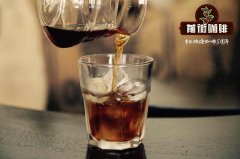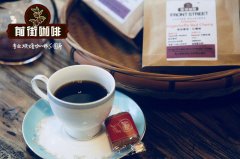What is yeast fermentation treatment? What is the source of yeast fermentation treatment? Panamanian emerald manor roses

Professional coffee knowledge exchange more coffee bean information please follow the coffee workshop (Wechat official account cafe_style)
Brief introduction of yeast fermentation treatment of Qianjie Coffee
Yeast Fermentation
Yeast fermentation is inspired by the wine industry. Now, after continuous experiments, Canon adds yeast and bacteria in the process of fermentation to better control the effects of fermentation.
Yeast and bacteria are very important elements in the fermentation process. In the natural fermentation process of coffee, different microorganisms are involved in the fermentation process, and the enzymes produced by yeast and bacteria will decompose the sugar in pectin / mucus.
Yeast is often found in the processing of bread, wine and cocoa beans, as well as raw coffee beans.
Commercial yeast fermentation is mainly used in wine brewing. Yeast fermentation controls the microorganisms in the process of coffee fermentation, changes the flavor of coffee, and makes the coffee less bitter, astringent, and sometimes even sour. The practice is to select specific yeasts or microorganisms for so-called secondary fermentation.
Yeast fermentation originated in Gothenburg, Sweden. Camille Delebeque, a French doctor of biology, gave a speech at Re;co. His company changed the flavor of coffee by controlling the microbes in the process of coffee fermentation, so that the coffee became not bitter, astringent, and sometimes even sour. He called the product Cultured coffee, or microbial coffee.
Their approach is to select specific yeasts or microbes for so-called secondary fermentation, to improve the good flavor, or to reduce the bad flavor. Even if he did not disclose what microbes he used, nor did he explain how his secondary fermentation was carried out, let alone the origin of coffee, beans, and so on, his product was not cheap at all, asking $29 for 5 ounces (148g).
Aida Batlle, El Salvador's best-known coffee farmer, partnered with Equator, an American bean baker, to add yeast to the fermentation tank of Buenos Aires on the Salvadoran farm to test the effect on the flavor and compare it with the traditional washing treatment without yeast. In 2017, they experimented with two different yeasts and found that different yeasts produced different results. One of them increases the sweetness, balance and consistency of coffee, while the other improves brightness and fruit tonality. Yeast treatment adds flavors that are not easily available in traditional washing: sugarcane, lemon, nutmeg and sage.
Panamanian Jade Manor Rose Summer auction yeast processing series (according to official sources, this ES-Y): a total of four LOT batches, nine boxes of beans, using a new treatment method "yeast fermentation" and unique flavor of Rosa.
One of the biggest highlights of this year's auction is the addition of "yeast treatment batches": adding special yeast to the fermentation tank for 48 hours before washing, and then drying on the drying bed for four days. Unique yeast treatment batches. The addition of yeast in the post-processing process makes the fermentation process more rapid and thorough, and produces a special flavor.
According to the different flavor of red wine of yeast, the red wine taste of yeast An is more obvious than that of yeast B, while the red wine of yeast An is more meticulous, which can show the characteristics of Rosa more beautiful, so the price of Ymur1 is higher.
Lot ES-Y-1: add A yeast to ferment for 48 hours, then wash it, then dry it on the scaffolding for 4 days, the bidding price is US $340 / lb!
Lot ES-Y-2: add B yeast to ferment for 48 hours, then wash it, then dry it on the scaffolding for 4 days, the bidding price is US $111l / lb!
According to the manor operator Rachel Peterson, the "yeast fermentation method" is an attempt at the treatment of the Jade Manor to observe the performance of Rosa coffee fermented by yeast inoculation.
Treatment process: manually pick the fully ripe bright red fruit, sift out the small size and rinse, soak in clean water, ferment for about 48 hours, add yeast, and then dry in the sun. It is about 1 to 2 layers thick on the tanning bed, after 4 days of sun exposure, the average temperature: daily: 16 degrees-23 degrees, every night: 10 degrees-15 degrees, complete a completely different unique flavor!
After testing the red mark with yeast in our cup, we are pleased to find that this method enhances the performance of Rose Summer Coffee in all aspects (including aroma, mellow thickness, acidity and finish) and is very different from Sun Rose Summer. In general, it is closer to anaerobic fermentation, this treatment of rose summer is very good in terms of aroma and flavor, it grinds away the unsoftness and high acidity of washed coffee, brings a balanced and rich layer, and adds a flavor similar to red wine.
Important Notice :
前街咖啡 FrontStreet Coffee has moved to new addredd:
FrontStreet Coffee Address: 315,Donghua East Road,GuangZhou
Tel:020 38364473
- Prev

Front Street Coffee Honduras Sherry Coffee introduction Front Street Coffee Honduras Shirley Coffee good
For more information on coffee beans, please pay attention to the Honduran Shirley flavor of coffee on the front street of Coffee Workshop (official Wechat account cafe_style): aromas of sherry oak and vanilla, berries and dark chocolate on the palate and maple syrup in finish. Variety: Kaddura, Kaduai, Pacas Kaddura (Caturra) is bourbon (bourbon)
- Next

What is the third wave of coffee? a brief introduction to the third wave of coffee
More information on coffee beans Please follow Coffee Workshop (Wechat official account cafe_style) the third wave was at the end of the 20th century, when the Coffee Company (Third Wave Coffee) ventured to turn coffee into a handmade coffee, taking into account all stages of production to improve the quality of coffee. This requires the source and species of raw materials.
Related
- Beginners will see the "Coffee pull flower" guide!
- What is the difference between ice blog purified milk and ordinary milk coffee?
- Why is the Philippines the largest producer of crops in Liberia?
- For coffee extraction, should the fine powder be retained?
- How does extracted espresso fill pressed powder? How much strength does it take to press the powder?
- How to make jasmine cold extract coffee? Is the jasmine + latte good?
- Will this little toy really make the coffee taste better? How does Lily Drip affect coffee extraction?
- Will the action of slapping the filter cup also affect coffee extraction?
- What's the difference between powder-to-water ratio and powder-to-liquid ratio?
- What is the Ethiopian local species? What does it have to do with Heirloom native species?

